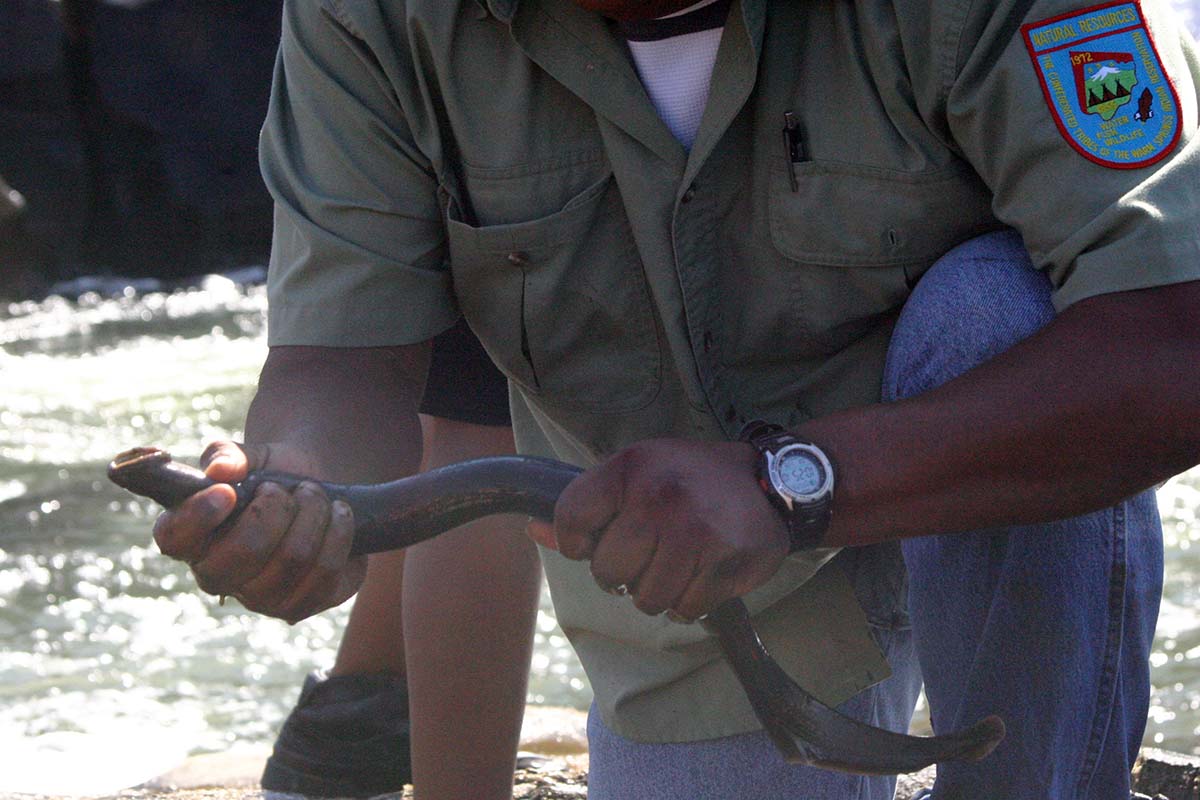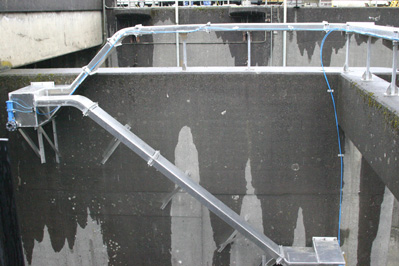Pacific Lamprey Restoration Efforts
In the past few years, the tribes have been the species’ primary advocates, calling for the protection and restoration of the Pacific lamprey. To address the lamprey’s decline, the Columbia River treaty tribes created the Tribal Pacific Lamprey Restoration Plan, the most comprehensive restoration plan for Pacific lamprey that the Columbia Basin has seen. Lamprey research, restoration projects, hydropower facility modifications, and policy creation are being performed by the Yakama, Umatilla, Warm Springs, and Nez Perce tribes and their collective body the Columbia River Inter-Tribal Fish Commission.
Two lamprey summits have already been held, bringing together tribal, state, and federal agencies to address lamprey decline and ways to reverse the trend. The Tribal Pacific Lamprey Restoration Plan emerged from the efforts of the second lamprey summit, and marks the formal beginning of a coordinated, concerted effort by the region’s governments and agencies to protect and restore these fish whose ancestors swam the earth well before the lands that comprise the Columbia River Basin had even emerged from the primordial ocean.
Tribal Restoration Projects and Successes

NPT translocations and genetic monitoring
In 2007, the Nez Perce Tribe began translocating adult Pacific Lamprey into tributaries of the Snake and Clearwater River basins with the ultimate goal of reestablishing lamprey production in these streams. Through genetic monitoring of these efforts, the Nez Perce Tribe has been able to document direct evidence of reproductive success by translocated adults as well as monitor the timing and behavior of outmigrating larval and juvenile lamprey – progeny from the 2007 and 2008 translocations (Hess et al. 2015).
Hood River natural recolonization
In 2010, Powerdale Dam was removed from the Hood River, which opened up miles of previously inaccessible stream sections for anadromous fishes. Through the monitoring and evaluation efforts of the Warm Springs Tribe, Pacific lamprey were documented recolonizing Hood River upstream of the old Powerdale Dam site. Utilizing the latest genetic monitoring techniques provided by the Columbia River Inter-Tribal Fish Commission, the Warm Springs Tribe was able to document 1- and 2-year-old larval lamprey in the upper reaches of the Hood River (Hess et al. 2015).
Artificial propagation
The Yakama Nation and the Umatilla Tribe have taken the lead on developing protocols and best management practices for the artificial propagation and larval rearing of Pacific Lamprey (Lampman et al 2016). Artificial propagation of Pacific lamprey larvae offers a new tool for restoration as well as provides resources to help identify limiting factors that will need to be better understood in order to conserve, restore, and manage Pacific Lamprey as a species.
Contaminant accumulation
High levels of pesticides, flame retardants, and mercury in Pacific lamprey may be contributing to their overall decline in the Columbia River Basin according to research by the U.S. Geological Survey and the Columbia River Inter-Tribal Fish Commission (Nilsen et al. 2015). Constituting the largest dataset of contaminants found in Pacific lamprey habitat and tissue, the research found that concentrations of some flame retardants and pesticides were several hundred times higher in larval and juvenile lamprey tissues than in the surrounding sediments. Using samples from throughout the Columbia River basin, this research provides insight into the bioaccumulation of toxics in lamprey and their likely impacts on lamprey development from larvae to adults.
Fixing the System

